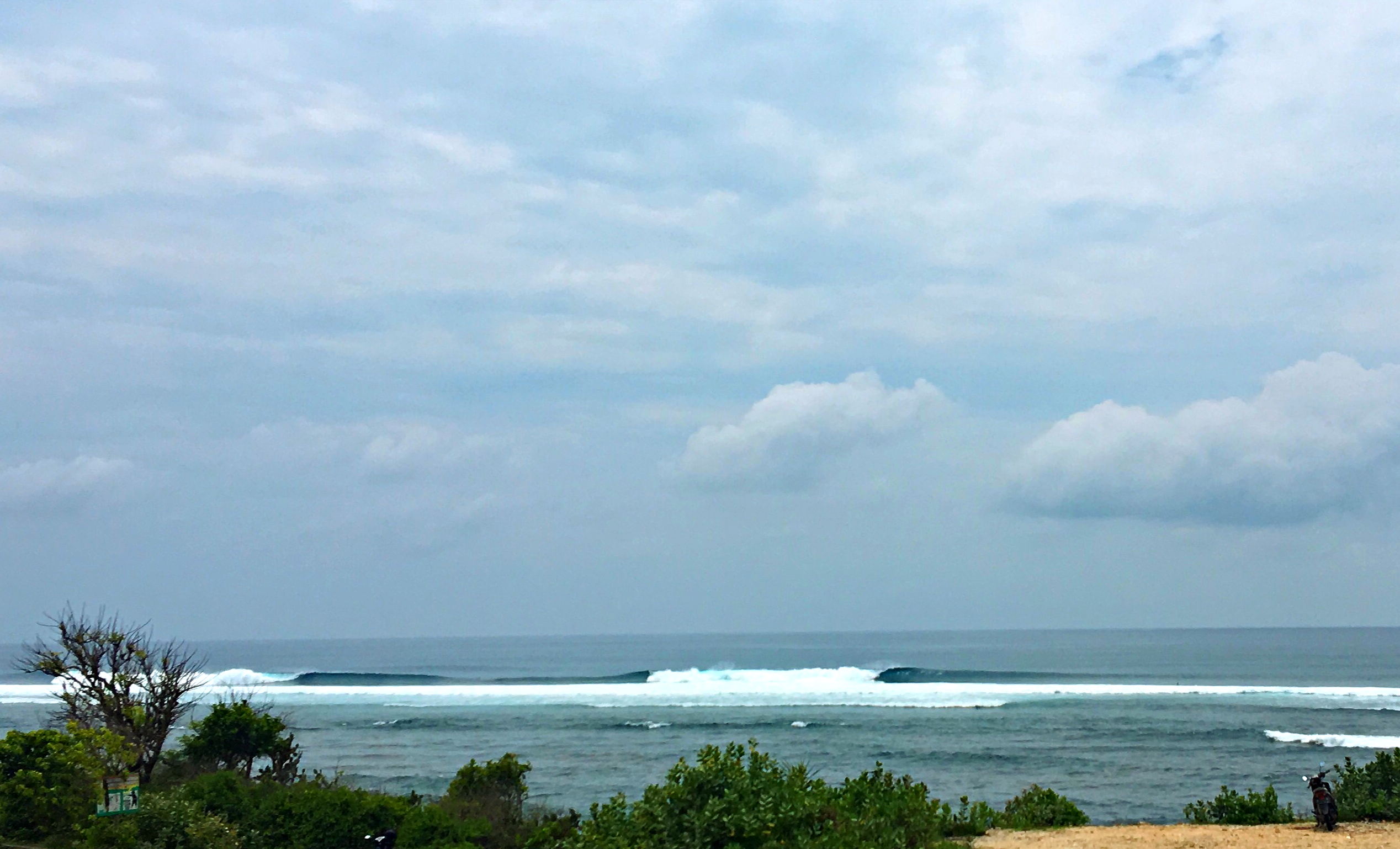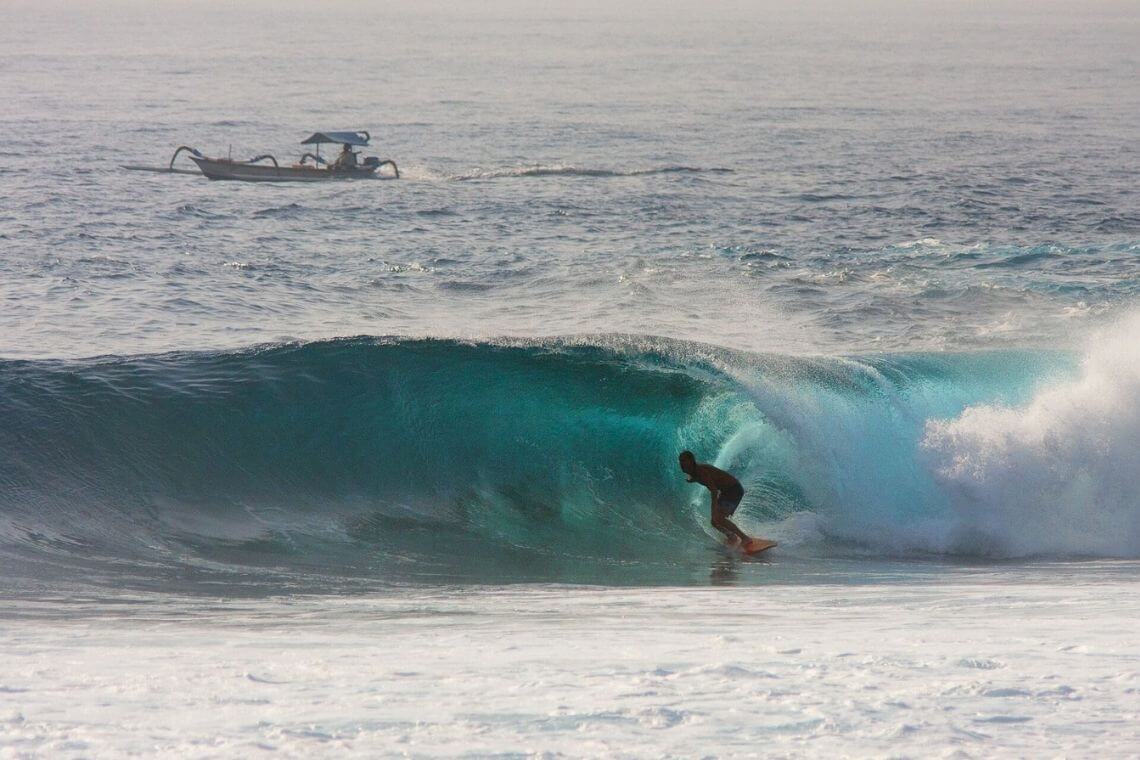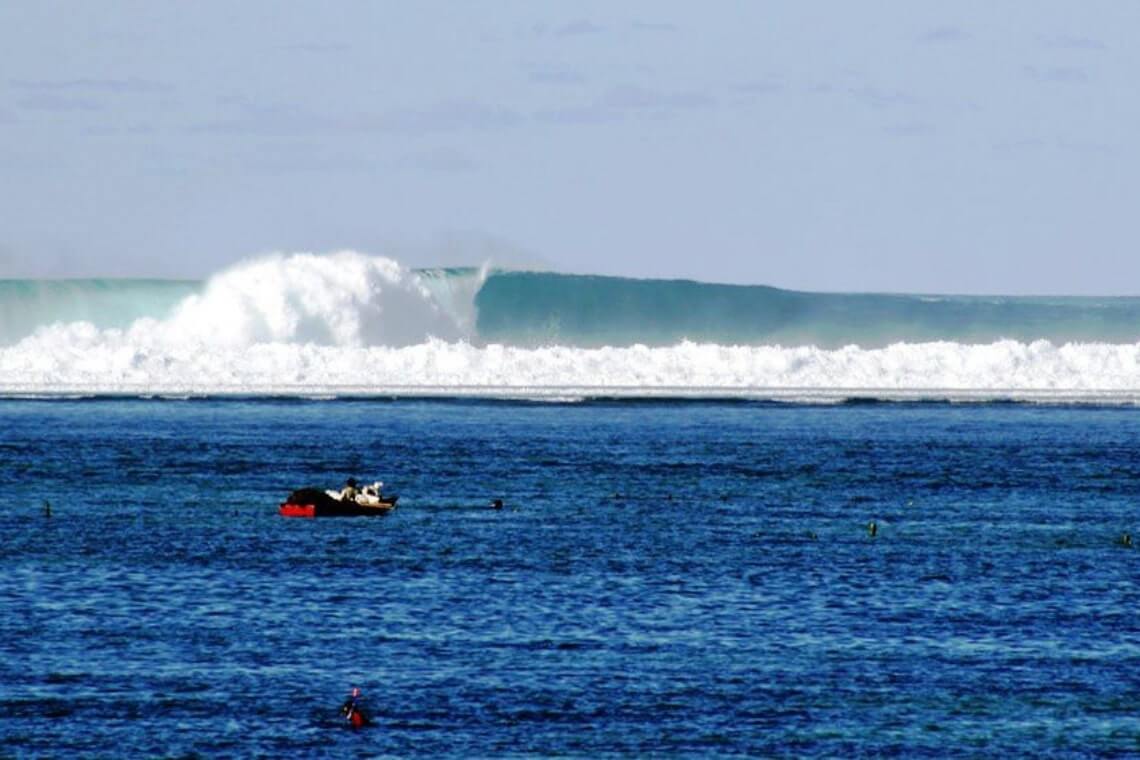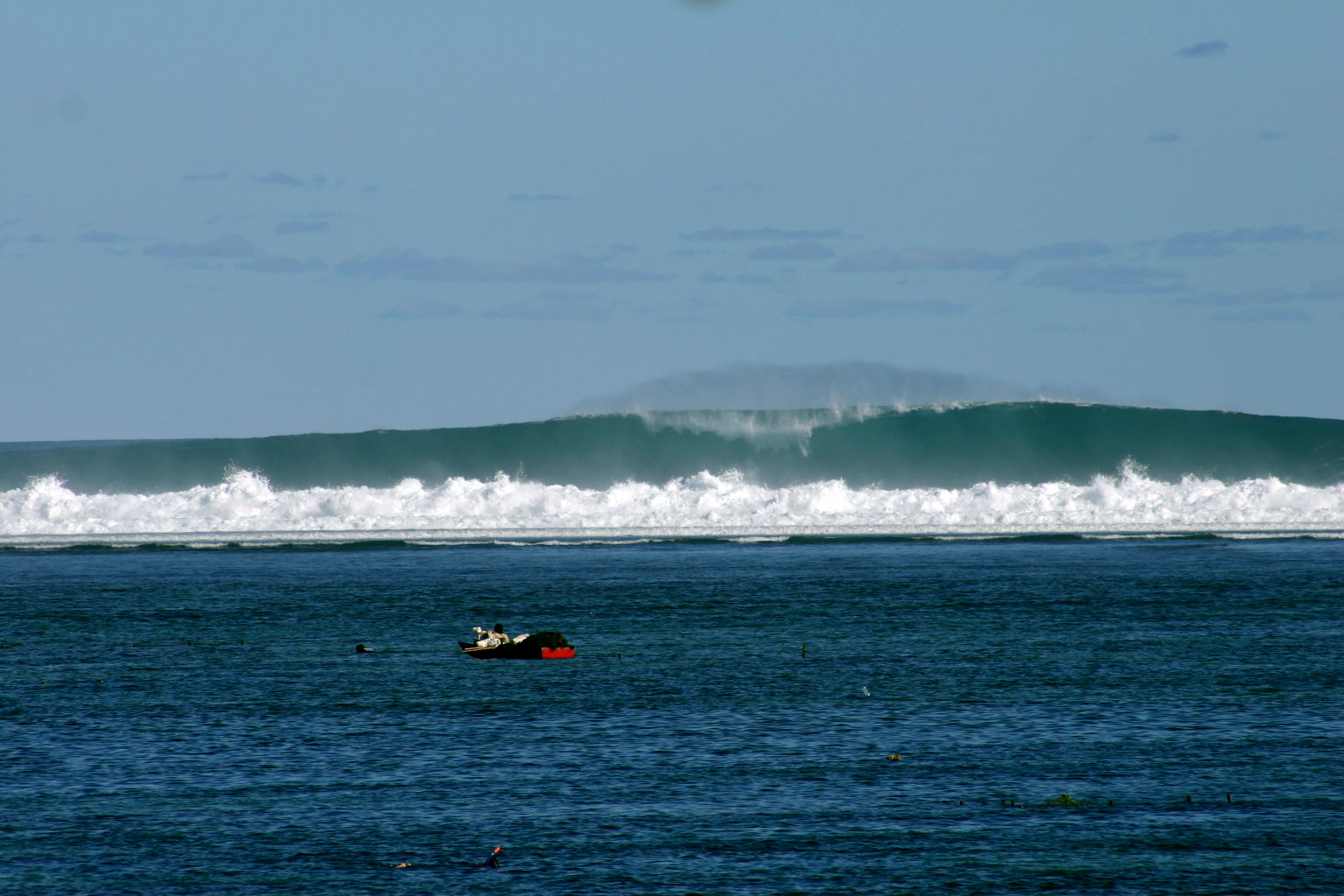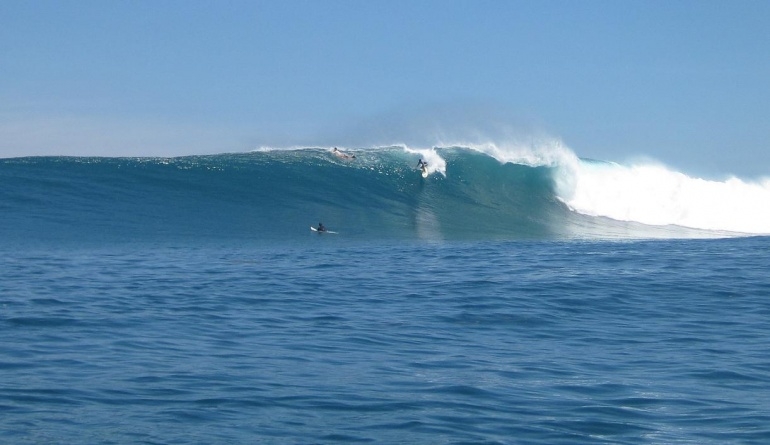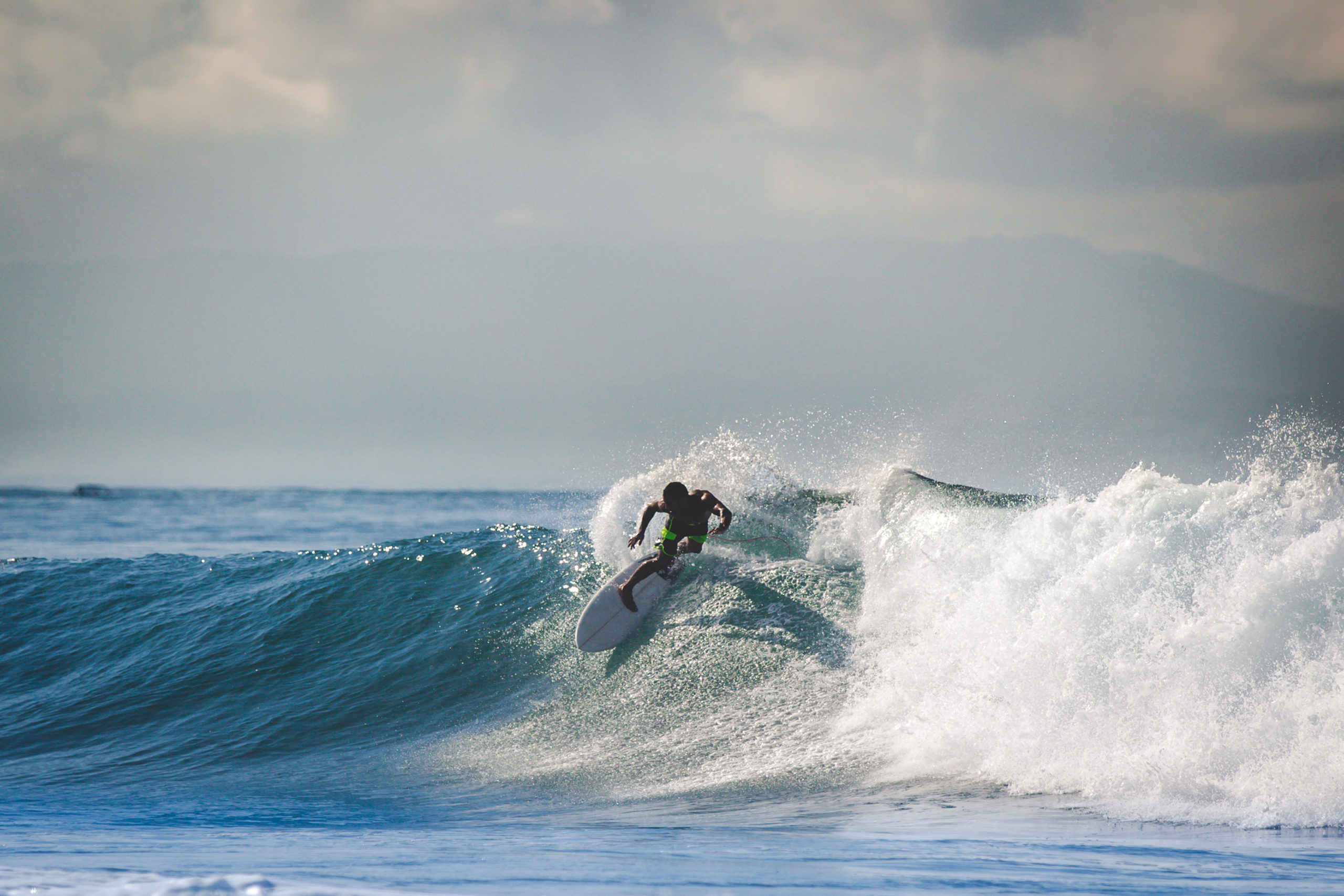Nusa Dua Surf Spots
Nusa Dua is Bali’s prime resort area of the island.
Targeted mainly towards families on holiday, the area has no party scene such as the likes of Kuta, Seminyak or Canggu. However, it does have a range of consistent wet season waves for those that want to surf every day. The reef at Nusa Dua is an open ocean reef stretching long and wide around the coastline of Geger Temple Beach, Geger Beach and Nusa Dua Beach for over 2 kilometres, protecting the beautiful white sand beach that is home to Nusa Dua’s long stretch of luxury resorts. Known as Bali’s premier big wave surf break the Nusa Dua reef is the most consistent right-hand reef break in Bali and has a various number of waves that break on different tides and slightly different conditions. Most are imperfect but on the right day can provide that all-time surfing experience.
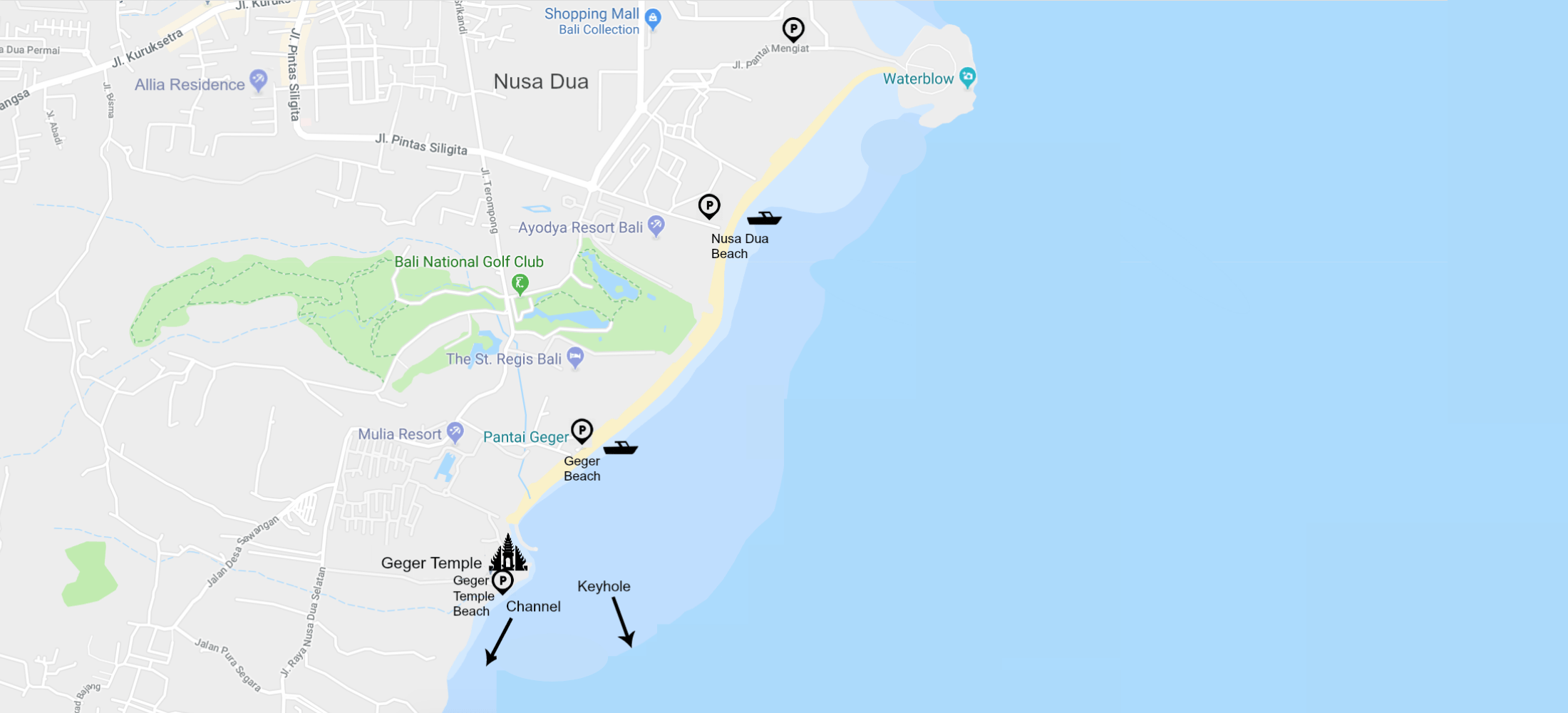
Blackstone
Chickens
Main Peak
Keyhole Left & Right
Elevators
Temple Lefts
Wave type:
-
Temple Lefts: Reef Break
-
Elevators: Reef Break
-
Keyhole Left: Reef Break
-
Keyhole RIght: Reef Break
-
Main Peak: Reef Break
-
Chickens: Reef Break
Wave difficulty:
-
Temple Lefts: Intermediate
-
Elevators: Experienced
-
Keyhole Left: Intermediate
-
Keyhole RIght: Intermediate
-
Main Peak: Experienced
-
Chickens: Intermediate
Wave direction:
-
Temple Lefts: Left
-
Elevators: Right
-
Keyhole Left: Left
-
Keyhole RIght: Right
-
Main Peak: Right
-
Chickens: Right
Wave bottom:
-
Temple Lefts: Reef
-
Elevators: Reef
-
Keyhole Left: Reef
-
Keyhole RIght: Reef
-
Main Peak: Reef
-
Chickens: Reef
Booties:
Temple Lefts: Personal preference
Elevators: Personal preference
Keyhole Left: Personal preference
Keyhole Right: Personal preference
Main Peak: Personal preference
Chickens: Recommended on low
Surfboard type:
Temple Lefts: Short or longboard
Elevators: Shortboard
Keyhole Left: Shortboard/step-up
Keyhole Right: Shortboard/step-up
Main Peak: Semi-gun/gun
Chickens: Shortboard
Crowd factor:
-
Temple Lefts: Medium Crowds
-
Elevators: Low Crowds
-
Keyhole Left: Low Crowds
-
Keyhole RIght: Low Crowds
-
Main Peak: Empty
-
Chickens: Low Crowds
Hazards:
Temple Lefts: See below
Elevators: See below
Keyhole Left: See below
Keyhole Right: See below
Main Peak: See below
Chickens: See below
Best swell direction:
Temple Lefts: S
Elevators: S
Keyhole Left: S
Keyhole Right: S
Main Peak: S
Chickens: SW
Best wind direction:
Temple Lefts: N
Elevators: NW
Keyhole Left: WNW
Keyhole Right: NW
Main Peak: NW
Chickens: WNW
What tide is best:
Temple Lefts: Lower tide
Elevators: Lower tide
Keyhole Left: Lower tide
Keyhole Right: Lower tide
Main Peak: Lower tide
Chickens: Higher tide
Best tide movement:
Temple Lefts: Outgoing to low
Elevators: Outgoing to low
Keyhole Left: Outgoing to low
Keyhole Right: Outgoing to low
Main Peak: low
Chickens: Incoming to high
Wave consistency:
Temple Lefts: Consistent (wet season)
Elevators: Inconsistent
Keyhole Left: Consistent (wet season)
Keyhole Right: Consistent (wet season)
Main Peak: Consistent (wet season)
Chickens: Consistent (wet season)
Best time of year:
Temple Lefts: March
Elevators: March
Keyhole Left: March
Keyhole Right: March
Main Peak: March
Chickens: March
Lineup vibe:
Most surfers that surf Nusa Dua are
cruisey dudes and have a lot of respect
for the wave as they know full well the
potential for danger and how frequently
unassuming surfers end up in trouble
Other names for spot:
Geger, Temple Peaks, Temple Lefts,
Elevators, Keyhole Left, Keyhole Right,
Main Peak and Chicken
Most Common hazards
There are a lot of hazards and potential possibilities for things to go wrong when surfing the reef at Nusa Dua and we can’t emphasise it enough – don’t put yourself in a situation you can’t handle. The reef is a long way from shore, there are no lifeguards to rescue you and fellow surfers can only do so much. Therefore you really are all alone when you are out there. The main concerns are long hold-downs, being dragged underwater for long periods of time, strong currents and getting consecutive sets of waves on the head. Getting waves on the head here is unavoidable and surfing here with a bit of size will most certainly end up with a broken board and a long swim back to shore. At the widest point in the reef where the Main Peak is situated, 6-foot waves sucking dry off the reef in big swells is a real threat if you are caught inside and is a life or death situation. Sea urchins, there are plenty of them in between the cracks and holes in the reef so don’t be clumsy or heavy-footed.
How do you get in and out of the surf?
You have three options when venturing out into the surf at Nusa Dua.
Option 1: Directly in front of the temple is a keyhole that you can paddle out through on a higher tide or make the walk across the reef on a lower tide bringing you out the back between Keyhole Left and Elevators.
Option 2: Paddle out through the channel at the very top of the reef from the car park at the temple bringing you into the lineup at Temple Lefts.
Option 3: Take a boat from either of the two pick up points on Geger Beach or Nusa Dua Beach, getting dropped off out the back of the reef. The one-way ride will cost you 50,000Rp. Don’t expect to catch a ride back in because the boat won’t be waiting around for you out there. To be honest, if you can’t make the long paddle out there and back then you shouldn’t be in the line up at Nusa Dua.
Tips: If you decide to paddle up the reef from Nusa Dua Beach you will most likely be paddling against a current. On the lower tide don’t try and paddle out over the reef anywhere except for the keyhole.
What is the beach like?
Geger Beach (southern end of the beach) and Nusa Dua Beach (northern end of the beach) is one long stretch of extremely well groomed and immaculately maintained white sand beach. The beach leads up into beachfront resort areas constructed of large grassy areas, pools, sun lounges, bean bags, daybeds and all the types of luxuries that the top of the line resorts provide. A long path separates the beach and resort frontages which makes for the perfect leisurely stroll any time of the day. It is a prime spot for watching the sunrise and hanging out for the day as all holiday goers take in the sun, unwind and relax to the fullest.
Where should I stay in Nusa Dua?
There is a huge amount of luxury resort options in the Nusa Dua area. Particularly along Geger and Nusa Dua Beach looking out over the lagoon with the surf in the distance. Most of these accommodation options are out of the average surfers budget, although at any one time there is usually one or two resorts with reduced room rates around $150 AUD per night. There are a few cheap accommodation options in the Nusa Dua area, however, these are situated 1 km or so from the beach as you pay a premium price for beachfront accommodation in Nusa Dua. The good news is that the beach is only a short scooter ride away which coincidentally is about the same time it will take you to walk from your room and across the huge area that each resort covers to get to the beach or your scooter anyway.

Mid Price Range – Hotel Santika Siligita Nusa Dua
Moving closer to the beach and surf in Nusa Dua is Hotel Santika. Located outside of the Nusa Dua beach resort area and one kilometre from the beach Hotel Santika is in the heart of Nusa Dua. It is an easy drive from here turning right at the roundabout to make your way out to Geger Temple where you can park up, check the surf and paddle out through the keyhole or channel if the surf is on. The hotel has a long pool perfect for any swim training and also a business centre if you are lucky enough to be on an extended surf trip and working remotely.
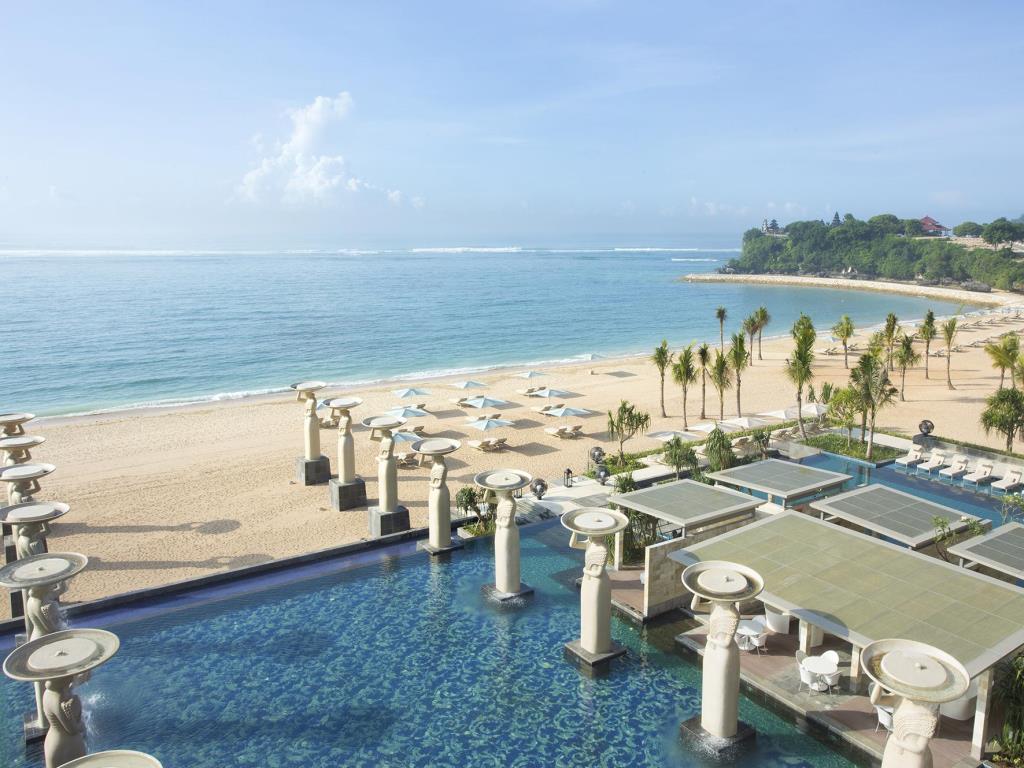
Luxury Price Range – The Mulia
One of the best resorts in Nusa Dua and the most expensive. As far as staying as close as you can possibly get to the surf in Nusa Dua The Mulia is as good as it gets. From the resort, you can walk across the beach and make the long paddle out to the keyhole in the reef. The Mulia features some of the best restaurants in Nusa Dua, each a fine dining experience and different international cuisine. Beachfront suites, Lagoon suites and Villas make up the accommodation options. All providing a remarkably exclusive experience. You can expect six luxurious pools, four restaurants (some award-winning), five bars, a tennis centre and a cutting edge fitness centre and spa. If you aim to surf your brains out at Nusa Dua and have got the money to burn on one of Nusa Dua’s best beachfront resorts then The Mulia maybe for you.
DEALS ON PLACES TO STAY IN NUSA DUA
Faq
Is there food nearby?
Knowing where to eat in Nusa Dua can be a tricky one. In comparison to areas such as Canggu or Berawa where there is a huge cafe scene, there isn’t a big array of restaurant or cafe options. Most Nusa Dua restaurants are located within the resorts or the main shopping centre in the resort area known as “Bali Collection”. However, outside of the immediate Nusa Dua resort area, there are some hidden gems that really are the go-to places to eat in Nusa Dua! These are listed below.
The Secret Café – Amazing service, fantastic food, great portions and more than fairly priced. Owner-operator Indra personally takes the time to source fresh and healthy produce to serve up to her customers, all of which are repeat customers. One trip to the Secret Café and you will be returning every other day of your surf trip to Nusa Dua. Except for Wednesday, it’s the only day of the week they are closed. Try the Satisfaction Salad, it is a hearty meal and a favourite of those who wouldn’t usually order a salad and it’s sure to keep you going for your next surf.
Gendis Coffee and Kitchen is a great step up from local food with a brilliant combination of western food and amazing Balinese meals. If you like pork you have to try their crispy pork belly served with the best Balinese sauce you will ever try. The chefs at Gendis have a passion for good food and coffee. They can even suggest other great places to eat and drink throughout the rest of Bali. Get down there and check it out while you’re in Nusa Dua or even just passing through. It is located off the main roads in an up-market local back street of Nusa Dua so make a little extra effort to get there because it is well worth it.
Warung Kedai N’deso is a reliable place to try some local food. The staff are extremely friendly and the bill will be the cheapest you get on your surf trip in Bali.
What else is there to do in the area other than surfing?
Snorkeling – The long stretch of sand along Geger and Nusa Dua Beach leads into a large lagoon that is created by the long outer surfing reef at Nusa Dua. This makes for a great area to get your snorkel, mask and flippers on and explore the crystal clear water.
The Bali National Golf Club has been awarded Best Renovated Golf Course in Asia in 2014, Third Best Renovated Golf Course Worldwide in 2015, Fifth Best Golf Resort in the Asia Pacific in 2016 and the Best Golf Resort Indonesia in 2017. The 18-hole course features three distinguishable playing environments throughout.
Holes: One through to nine feature creeks, canyons and native vegetation filled with tropical birds
Holes: Ten through to sixteen offer lush and gently sculptured fairways through a mature grove.
Holes: Seventeen and eighteen are challenging holes which test every golfer.
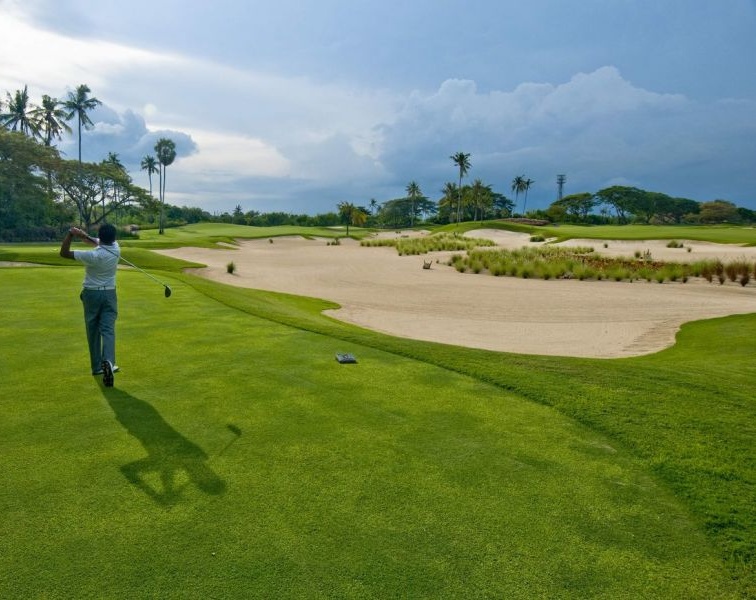
What else
do I need
to Know?
Access Our Exclusive Members-Only Content
Unlock the Spot Finder, all Spot Guides, Member Perks and more.
Location
Where is Nusa Dua?
Nusa Dua is located on the south-east side of Bali, 14 kilometres south-east of the Ngurah Rai International Airport and approximately 25 minutes when travelling the Bali Mandara Toll Road from the international airport.
How to get around?
If you are not staying in the area then a local surf guide is a great option to get you to the surf in Nusa Dua. They will provide you with a reasonable daily rate and transport you by car. Otherwise, if you’re staying in the area then hire a scooter and make your own way. The streets are a little quieter in Nusa Dua than other areas of Bali so it is a good spot to get used to the Balinese traffic and how the traffic flows before you venture on to the busier areas of Bali.
Is there parking fees?
When surfing Nusa Dua you will have to pay parking fees to the local village upon entry. Below are all the parking options and the cost involved if you are travelling by scooter:
Waterblow / Bali Collection Parking – 3.000Rp per scooter
Nusa Dua Beach Parking – 2.000Rp per scooter
Geger Beach / Surfers Beach parking – 3.000Rp per person
Geger Temple Parking – 2.500Rp per person

